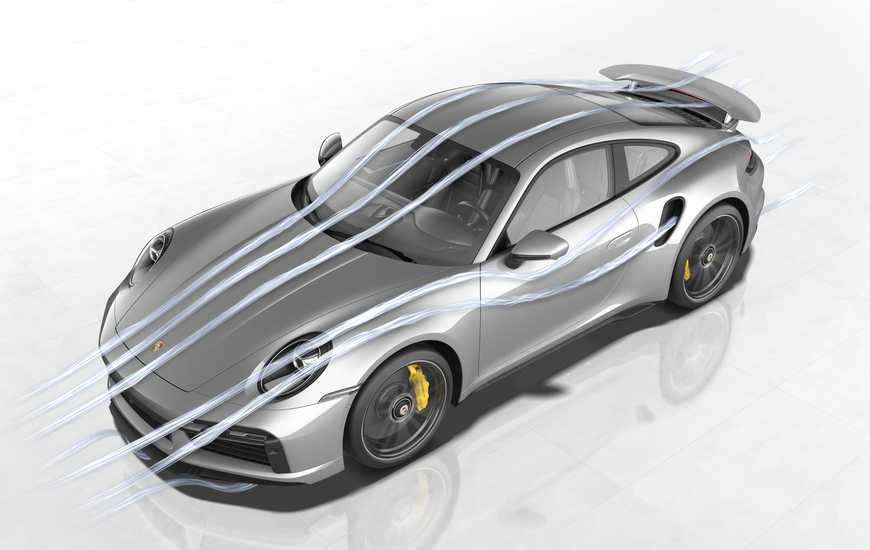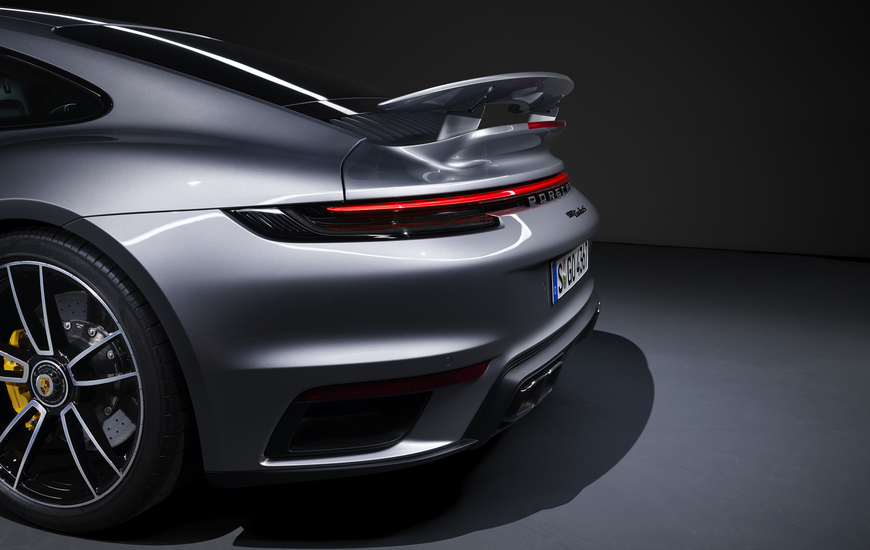More powerful, dynamic and comfortable than ever before: the new 911 Turbo S sets new standards in many areas. That is also true for the adaptive aerodynamics, which Porsche has further enhanced in its flagship 911. Porsche Active Aerodynamics (PAA) adapts the aerodynamic characteristics of the vehicle even more precisely to the driving situation, speed and selected driving mode. PAA celebrated its world premiere in the previous generation of the 911 Turbo launched in 2014. All model lines from the 718 through to the Panamera and Taycan now feature active aerodynamic elements.
Lightweight construction is used on the rear wing: the distinctive Turbo feature weighs 440 grams less than the corresponding component of the predecessor, but has an eight percent larger effective area. The basis of the wing is a foam core with forged inserts. The structure consists of an upper side with two layers of carbon-fibre reinforced plastic (biaxial CFRP fabric) and a lower side with one layer of glass-fibre reinforced plastic (triaxial GFRP fabric). Electric adjustment of the wing – which can be extended and tilted – is performed primarily depending on the speed and select-ed driving mode.
Depending on the driving modes, there are now additional positions as well as the familiar Speed and Performance positions:
• The Eco position with retracted wing is now available over a large speed range so that the vehicle can be driven with minimum drag.
• The Performance II position with reduced angle of attack for speeds above 260 km/h reduces drag and decreases the load on the tyres on the rear axle: this made it possible to avoid increasing the tyre pressure. The advantage of these measures is high tyre potential in terms of longitudinal and lateral dynamics for driving performance and particularly sporty vehicle operation, such as on race tracks. Everyday usability and driving comfort also benefit from the adapted tyre pressure.
• In the second new wing position Wet, the wing is well-extended but is not yet tilted. In combination with the completely retracted front spoiler lip, the aerodynamic balance is shifted towards the rear axle when Wet mode is activated. The result is higher rear-end and driving stability, ensuring greater safety on wet road surfaces.
-

-
17 April 2020























